AIDA64:
This is a new benchmarking suite that we have started to use. It covers 9 different benchmarks for just the processor. All of the sub-benchmark descriptions are taken directly from AIDA64’s website.
CPU Queen Benchmark:
This simple integer benchmark focuses on the branch prediction capabilities and the misprediction penalties of the CPU. It finds the solutions for the classic “Queens problem” on a 10 by 10 sized chessboard. At the same clock speed theoretically the processor with the shorter pipeline and smaller misprediction penalties will attain higher benchmark scores. For example — with HyperThreading disabled — the Intel Northwood core processors get higher scores than the Intel Prescott core based ones due to the 20-step vs 31-step long pipeline. CPU Queen test uses integer MMX, SSE2 and SSSE3 optimizations.
|
|
|
||
| Stock – 3.6GHz | Overclocked – 4GHz |
We see the chip has a score of 26298 at stock speed, which comes in just under the performance of the x6 1055T. When overclocked, the chip earns a score of 29261, putting it ahead of the 1055T at stock speeds.
CPU PhotoWorxx Benchmark:
This benchmark performs different common tasks used during digital photo processing.
It performs the following tasks on a very large RGB image:
- Fill
- Flip
- Rotate 90 degrees CW
- Rotate 90 degrees CCW
- Fill the image with random coloured pixels
- Colour to black & white conversion
- Difference
- Crop
This benchmark stresses the integer arithmetic and multiplication execution units of the CPU and also the memory subsystem. Due to the fact that this test performs high memory read/write traffic, it cannot effectively scale in situations where more than 2 processing threads are used. For example, on a 8-way Pentium III Xeon system the 8 processing threads will be “fighting” over the memory, creating a serious bottleneck that would lead to as low scores as a 2-way or 4-way similar processor based system could achieve. CPU PhotoWorxx test uses only the basic x86 instructions, and it is HyperThreading, multi-processor (SMP) and multi-core (CMP) aware.
|
|
|
||
| Stock – 3.6GHz | Overclocked – 4GHz |
The 975 scores 32188 at stock speeds, and 25672 when overclocked. This is the first time we’ve seen performance drop due to an overclock. This may be due to the cores being starved for memory access.
CPU Zlib Benchmark:
This integer benchmark measures combined CPU and memory subsystem performance through the public ZLib compression library. CPU ZLib test uses only the basic x86 instructions, and it is HyperThreading, multi-processor (SMP) and multi-core (CMP) aware.
|
|
|
||
| Stock – 3.6GHz | Overclocked – 4GHz |
At stock speeds, the 975 has a throughput of 177.2 MB/s. When overclocked, the chips scores 196.8 MB/s, coming in just shy of the performance of the 1055T. The brute speed can’t make up for the lack of cores that the 975 has when compared to the x6 1055T.
CPU AES Benchmark:
This benchmark measures CPU performance using AES (Advanced Encryption Standard) data encryption. In cryptography AES is a symmetric-key encryption standard. AES is used in several compression tools today, like 7z, RAR, WinZip, and also in disk encryption solutions like BitLocker, FileVault (Mac OS X), TrueCrypt.
CPU AES test uses only the basic x86 instructions, and it’s hardware accelerated on VIA PadLock Security Engine capable VIA C3, VIA C7 and VIA Nano processors; and on Intel AES-NI instruction set extension capable processors. The test is HyperThreading, multi-processor (SMP) and multi-core (CMP) aware.
|
|
|
||
| Stock – 3.6GHz | Overclocked – 4GHz |
We see that at stock speeds, the chip scores 39893, while when overclocked it scores 43885.
CPU Hash Benchmark:
This benchmark measures CPU performance using the SHA1 hashing algorithm defined in the Federal Information Processing Standards Publication 180-3. The code behind this benchmark method is written in Assembly, and it is optimized for every popular AMD, Intel and VIA processor core variants by utilizing the appropriate MMX, MMX+/SSE, SSE2, SSSE3, or AVX instruction set extension. CPU Hash benchmark is hardware accelerated on VIA PadLock Security Engine capable VIA C7 and VIA Nano processors.
|
|
|
||
| Stock – 3.6GHz | Overclocked – 4GHz |
At stock speeds, the 975 has a throughput of 2399 MB/s. When overclocked, the throughput is bumped up to 2661 MB/s, this isn’t enough to make it move up in rank however.
FPU VP8 Benchmark:
This benchmark measures video compression performance using the Google VP8 (WebM) video codec Version 0.9.5 (http://www.webmproject.org). FPU VP8 test encodes 1280×720 pixel (“HD ready”) resolution video frames in 1-pass mode at 8192 kbps bitrate with best quality settings. The content of the frames are generated by the FPU Julia fractal module. The code behind this benchmark method utilizes the appropriate MMX, SSE2 or SSSE3 instruction set extension, and it is HyperThreading, multi-processor (SMP) and multi-core (CMP) aware.
|
|
|
||
| Stock – 3.6GHz | Overclocked – 4GHz |
The higher clock speed of the 975 helps it beat the 1055T right out the door, with a score of 2790. With the overclock, it comes in second to the 12 core Opteron 2431, with a score of 3093.
FPU Julia Benchmark:
This benchmark measures the single precision (also known as 32-bit) floating-point performance through the computation of several frames of the popular “Julia” fractal. The code behind this benchmark method is written in Assembly, and it is extremely optimized for every popular AMD, Intel and VIA processor core variants by utilizing the appropriate MMX, MMX+/SSE, SSE2, SSSE3, or AVX instruction set extension. FPU Julia test is HyperThreading, multi-processor (SMP) and multi-core (CMP) aware.
|
|
|
||
| Stock – 3.6GHz | Overclocked – 4GHz |
At stock speeds, the 975 comes in just under the 1055T with a score of 9160. When overclocked, it closes in the gap and earns a score of 10177.
FPU Mandel Benchmark:
This benchmark measures the double precision (also known as 64-bit) floating-point performance through the computation of several frames of the popular “Mandelbrot” fractal. The code behind this benchmark method is written in Assembly, and it is extremely optimized for every popular AMD, Intel and VIA processor core variants by utilizing the appropriate MMX, MMX+/SSE, SSE2, SSSE3, or AVX instruction set extension. FPU Mandel test is HyperThreading, multi-processor (SMP) and multi-core (CMP) aware.
|
|
|
||
| Stock – 3.6GHz | Overclocked – 4GHz |
The chip earns a score of 4661. With the chip overclocked to 4 GHz, it scores 5181.
FPU SinJulia Benchmark:
This benchmark measures the extended precision (also known as 80-bit) floating-point performance through the computation of a single frame of a modified “Julia” fractal. The code behind this benchmark method is written in Assembly, and it is extremely optimized for every popular AMD, Intel and VIA processor core variants by utilizing trigonometric and exponential x87 instructions. FPU SinJulia is HyperThreading, multi-processor (SMP) and multi-core (CMP) aware.
|
|
|
||
| Stock – 3.6GHz | Overclocked – 4GHz |
The 975 is able to earn a score of 2328 at stock speeds. With the overclock, it weighs in with a score of 2587.
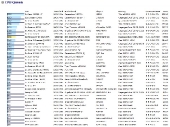
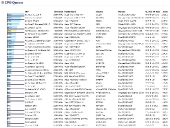
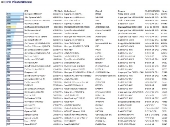
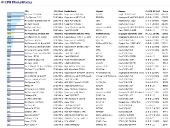
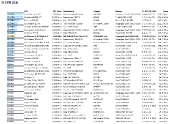
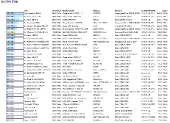
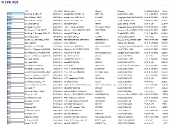
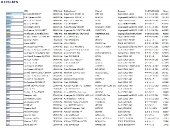
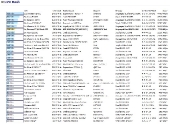
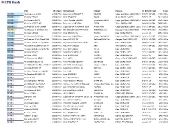
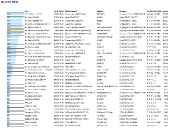
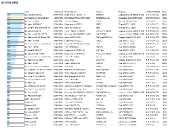
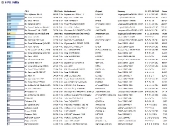
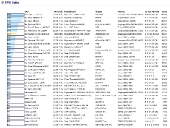
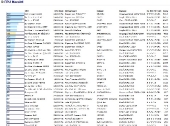
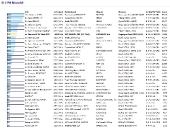
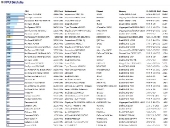
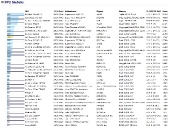

[…] AMD Phenom II x4 975 Black Edition 3.6GHz CPU-Processor @ TechwareLabs […]
[…] core chip? Does it have what it takes to go up against Intel's new offerings? Lets find out.LINK: TechwareLabs Review: AMD Phenom II x4 975 Black Edition 3.6GHz CPU-Processor Title: TechwareLabs Review: AMD Phenom II x4 975 Black Edition 3.6GHz […]